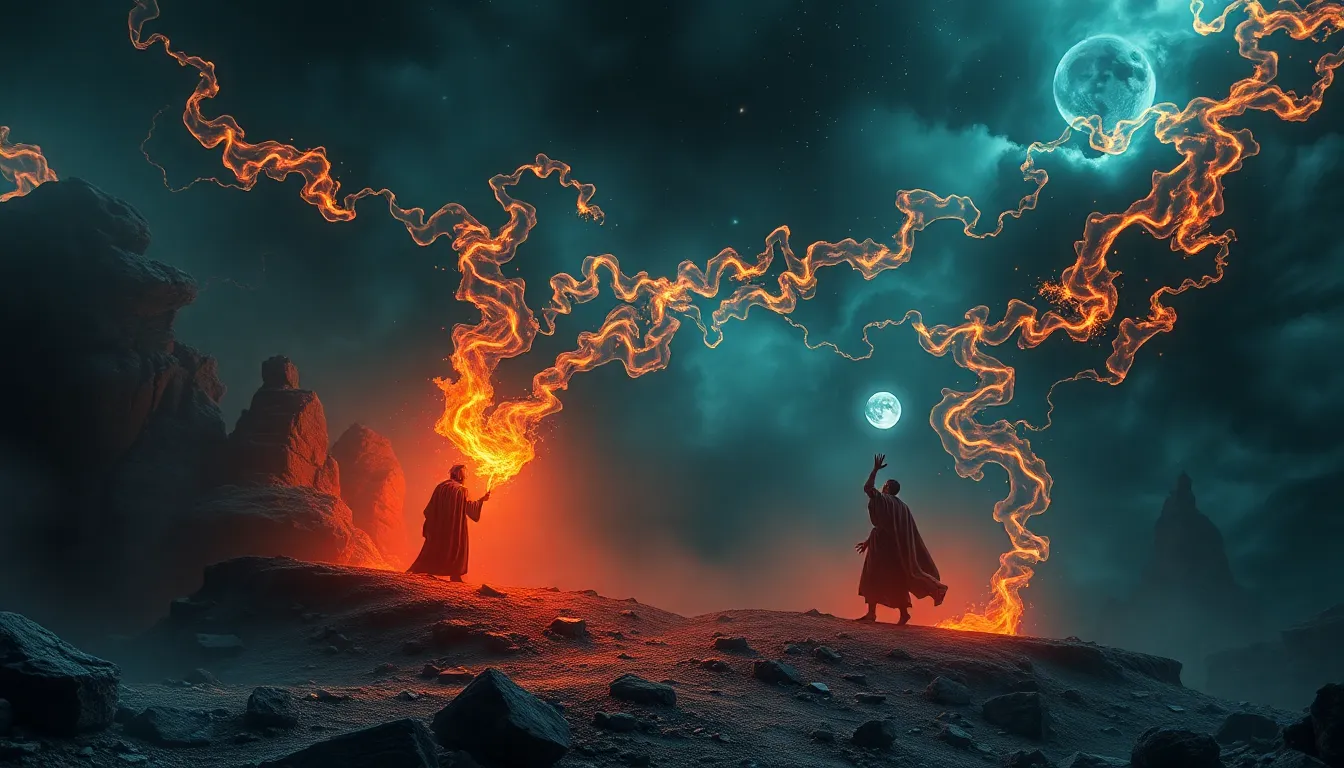Baltic Mythology: Tales of Love, Betrayal, and Redemption
The Baltic region, stretching across northern Europe, is home to a vibrant and fascinating mythology that has shaped its cultural identity for centuries. Unlike the well-known Greek or Norse myths, Baltic mythology, often referred to as Latvian, Lithuanian, or Prussian mythology, has a distinct flavor. It's steeped in nature, rooted in the land and its people, and resonates with themes of love, betrayal, and redemption.
The Role of Nature in Baltic Myths
Baltic mythology deeply embraces the natural world. Gods and goddesses are not confined to heavenly realms but dwell in forests, mountains, rivers, and seas, embodying the forces of nature. The sun, moon, stars, and the changing seasons all play significant roles in the stories, representing the rhythms of life and the cyclical nature of existence. This connection to nature is not just a backdrop; it's woven into the very fabric of the myths, shaping the characters, their motivations, and the lessons they impart.
Key Deities and Their Domains
The Baltic pantheon is populated by a diverse cast of deities, each associated with different aspects of the natural world and human life. Among the most prominent is Dievas, the sky god, often depicted as a powerful but fair figure. Perkūnas, the god of thunder, represents the raw power of nature, while Jūratė, the goddess of the sea, embodies the mystery and the depths of the ocean. Žemyna, the earth goddess, is responsible for fertility and growth. Each deity has a specific domain and function within the myth, contributing to the intricate web of relationships and interactions that define the Baltic worldview.
Love and Betrayal: The Theme of Perilous Passions
Love and its darker twin, betrayal, are recurring motifs in Baltic mythology. Many tales explore the complexities of human relationships, often with tragic consequences. The myth of Jūratė and Kastytis, for instance, tells the story of a mermaid queen who falls in love with a mortal man, only to suffer betrayal and lose her kingdom. This theme of love that leads to downfall resonates with the human experience, reminding us of the fragility of love and the potential for heartache.
Seeking Redemption: Trials and Transformations
Alongside the darker side of love, Baltic mythology also presents stories of redemption and transformation. Through trials and tribulations, characters often undergo significant changes, evolving from flawed individuals to heroes or heroines. Laima, the goddess of fate, is often involved in these transformations, guiding individuals on their journeys towards their destinies. These tales offer hope and the promise of renewal, suggesting that even in the face of adversity, there is always the possibility of growth and redemption.
The Myth of the World Tree: A Symbol of Connection and Growth
At the heart of Baltic mythology lies the concept of the World Tree, a mighty oak that connects the heavens, the earth, and the underworld. This tree symbolizes the interconnectedness of all things, emphasizing the unity of nature and humanity. The World Tree serves as a bridge between different realms, allowing spirits and deities to travel between them. It represents growth, renewal, and the cyclical nature of life. The World Tree's roots delve deep into the earth, drawing nourishment from the soil, while its branches reach towards the heavens, drawing energy from the sun and stars. The tree's presence is a constant reminder of the interconnectedness of all things, encouraging respect for nature and a sense of responsibility for the world.
The Influence of Baltic Mythology on Folklore and Tradition
Baltic mythology has profoundly shaped the folklore and traditions of the region. From folk tales to songs, dances, and rituals, the myths have been woven into the everyday lives of the people. Storytelling played a crucial role in preserving the myths, passed down through generations via word of mouth. These stories are filled with lessons about courage, wisdom, and the importance of respecting nature. Traditional songs, known as dainas, often reflect the themes of love, loss, and the enduring power of nature. Festivals and celebrations, like the celebration of the summer solstice, hold echoes of ancient beliefs and rituals, honoring the cyclical nature of the year and the power of the sun.
Theories on the Origin and Development of Baltic Mythology
The origins and development of Baltic mythology are complex and shrouded in mystery. Some scholars suggest that the mythology emerged from a shared Indo-European heritage, a common ancestor of many European languages. Others believe that unique elements were shaped by the specific environment and culture of the Baltic people. The myths likely evolved over centuries, influenced by interactions with neighboring cultures and the changing social and religious landscape. While the exact origins remain debated, what is clear is that Baltic mythology reflects a unique blend of ancient beliefs and traditions adapted to the specific experiences of the Baltic people.
The Impact of Christianity on Baltic Mythology
The arrival of Christianity in the Baltic region had a significant impact on the existing mythology. Many pagan beliefs and practices were suppressed or incorporated into Christian doctrine. Some deities were demonized or reinterpreted as evil spirits, while others were integrated into the Christian pantheon as saints or angels. Despite the efforts to eradicate pagan beliefs, many elements of Baltic mythology survived, often taking new forms. This fusion of pagan and Christian traditions created a complex and layered landscape of beliefs that continues to shape the region's cultural identity.
Contemporary Relevance: Exploring Baltic Mythology in Modern Literature and Art
Baltic mythology is experiencing a resurgence of interest in the contemporary world. Writers, artists, and musicians are drawing inspiration from these ancient tales, reinterpreting them for a modern audience. Baltic myths offer rich material for exploring timeless themes of love, loss, and the human relationship with nature. They illuminate the enduring power of storytelling and the ways in which myths connect us to our past and inspire our future. These tales provide a unique window into the cultural heritage of the Baltic region, offering a glimpse into the beliefs and values that have shaped the region's identity for centuries.
FAQ
Q: What are some famous Baltic myths?
A: Some well-known Baltic myths include the tales of Jūratė and Kastytis, the myth of the World Tree, and stories about the gods Perkūnas and Dievas.
Q: What are some key themes of Baltic mythology?
A: Key themes include the interconnectedness of nature and humanity, the power of love and betrayal, and the importance of seeking redemption.
Q: What is the significance of the World Tree in Baltic mythology?
A: The World Tree symbolizes the interconnectedness of all things, representing the unity of nature and humanity. It acts as a bridge between different realms, connecting the heavens, the earth, and the underworld.
Q: How has Baltic mythology been impacted by Christianity?
A: The arrival of Christianity led to the suppression or reinterpretation of many pagan beliefs and practices. Some deities were demonized, while others were integrated into the Christian pantheon.
Q: Why is Baltic mythology relevant today?
A: Baltic myths offer insights into the cultural heritage of the region and provide inspiration for contemporary artists, writers, and musicians. They explore timeless themes like love, loss, and the human relationship with nature.



